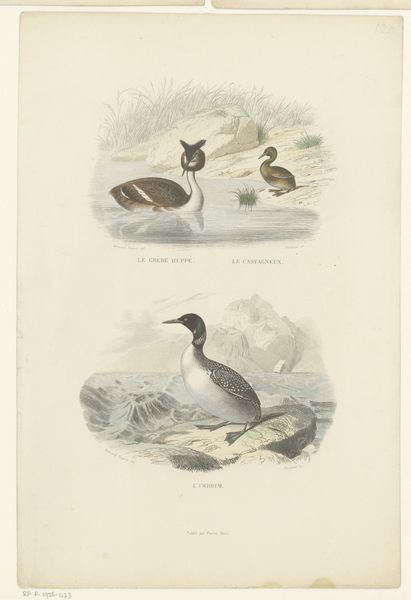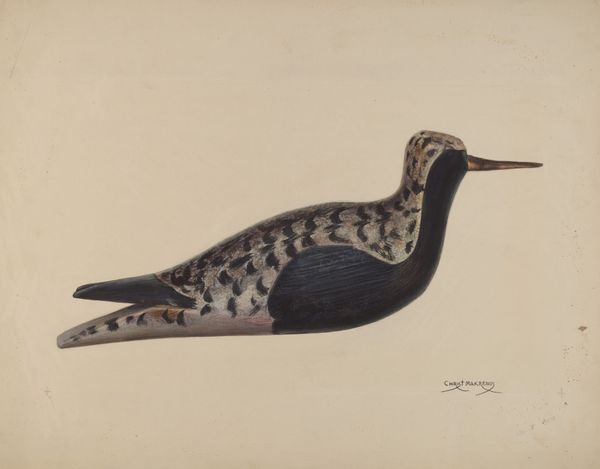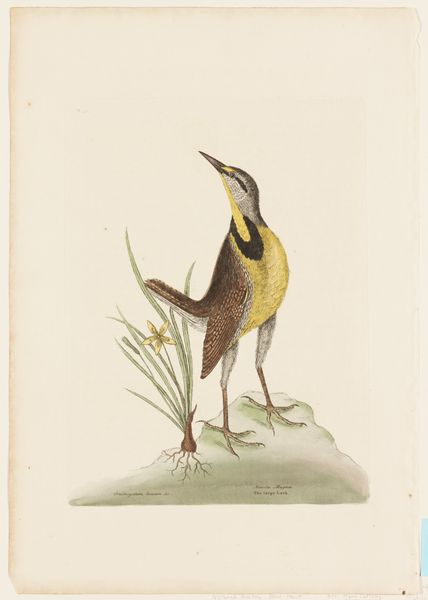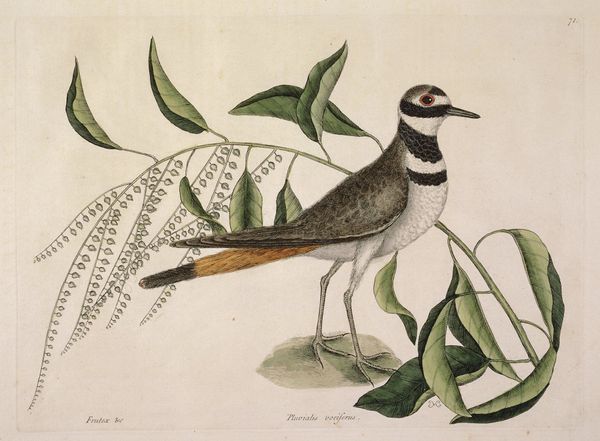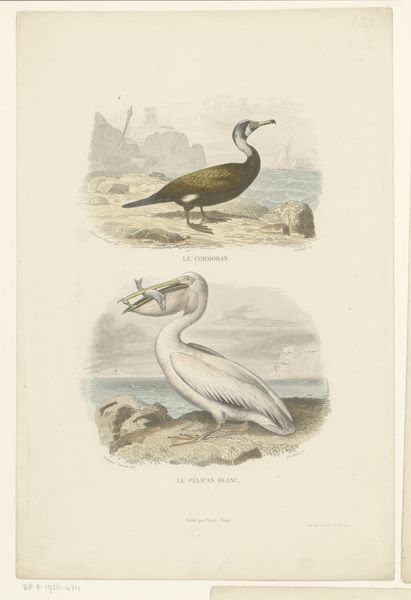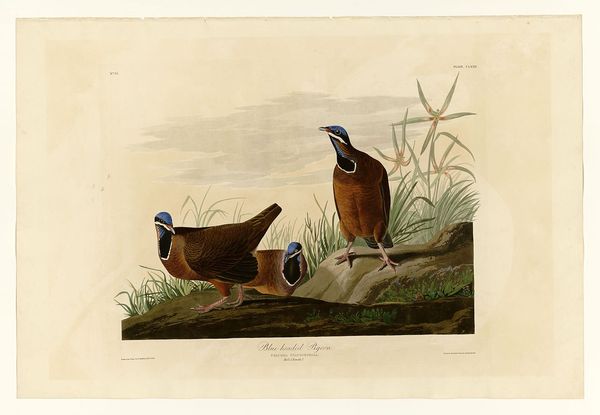
drawing, print, watercolor
#
drawing
# print
#
landscape
#
figuration
#
watercolor
#
coloured pencil
#
watercolour illustration
#
naturalism
#
watercolor
Dimensions: 15 7/8 × 21 5/8 in. (40.32 × 54.93 cm) (plate)23 3/4 × 29 3/4 × 1 1/8 in. (60.33 × 75.57 × 2.86 cm) (outer frame)
Copyright: Public Domain
Editor: This is Prideaux John Selby's "Great Crested Grebe," a watercolor drawing and print from sometime between 1819 and 1834. It's wonderfully detailed! I'm struck by how the artist captures the textures of the birds' plumage. What catches your eye in this composition? Curator: The most immediate aspect of this image is its precise rendering of form and texture. Note the almost scientific observation evident in the detailed depiction of the feathers. Observe, too, how the artist manipulates watercolor to give form, contour, and a visual representation that mimics tactile quality, as understood through naturalism. Editor: That's true! It almost feels like a field study. The realism is striking, especially in the way the light plays on the feathers. The arrangement is somewhat like a taxonomical chart with slight variations to mark individuality, despite shared traits. How would that chart-like feature influence your reading? Curator: A structuralist lens directs attention to the relationship between the individual elements and the overarching composition. The positioning of the two grebes—one erect, one reclining—creates a dialogue of form. Notice also the negative space: its articulation allows our focus to rest on the material rendering. This ensures that our eyes aren't fighting the composition for balance and ease. Editor: The negative space is certainly an important tool in giving structure to the positive forms! It directs the attention to key aspects of the grebes’ features, differentiating and uniting the figures at once. Curator: Precisely. Consider, as well, the delicate rendering of the reeds and water, not merely background elements but integral to the overall textural scheme of the print. Editor: Seeing the dialogue between positive and negative space, and also considering texture beyond pure representation gives me new eyes. Curator: Indeed, a closer focus on an artwork’s inner construction yields an evolved appreciation of its purpose and function.
Comments
No comments
Be the first to comment and join the conversation on the ultimate creative platform.

